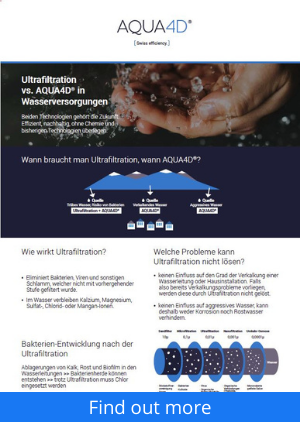Ultrafiltration and AQUA4D® for Water Treatment: An Objective Comparison
There’s no doubt these two technologies are the future: they are efficient, sustainable ways to treat water. They offer decisive advantages over most other technologies, and make it possible to massively reduce the use of chemicals in the water cycle.
This article aims to clarify some misunderstandings about the effectiveness of these two interesting technologies in water supplies for drinking water and irrigation.
Ultrafiltration briefly described
Ultrafiltration is, as the name suggests, a filtration technique. It is used when there are problems with turbid water or organic particles. It filters out all particles that are larger than the dissolved minerals (e.g., calcium or magnesium). Ultrafiltration thus eliminates bacteria and even viruses, and also filters out other sludge that was not filtered in the previous stage.
What is not filtered out is calcium and magnesium. To provide good water, it is important that these minerals remain in the water. Iron, sulphate, chloride, or manganese ions are also not filtered out and remain in the water.
What problems can ultrafiltration not solve?
Ultrafiltration has no influence at all on the degree of calcification of a water pipe or domestic installations. So if there are calcification problems, ultrafiltration will not solve them in any way.
Equally, ultrafiltration has no influence on aggressive water, which can lead to corrosion of pipes. The water can be aggressive because it contains chlorides or sulphates, or if the acid-base balance of the water is not right. Ultrafiltration has no influence on any of these factors – it can neither prevent corrosion nor rust water.
Ultrafiltration is used against bacteria in the water, but the water pipes after ultrafiltration get dirty in exactly the same way over time. These deposits in the pipes are the ideal habitats for bacteria development. Therefore, ultrafiltration has no influence on bacterial development in the water pipes after filtration. This means that bacterial foci can still develop in the water pipes, despite the ultrafiltration. That this is the case is shown by the fact that chlorine is still added to the water despite ultrafiltration in order to reduce the risk of bacteria development. So a toxic product is still being added to the water.
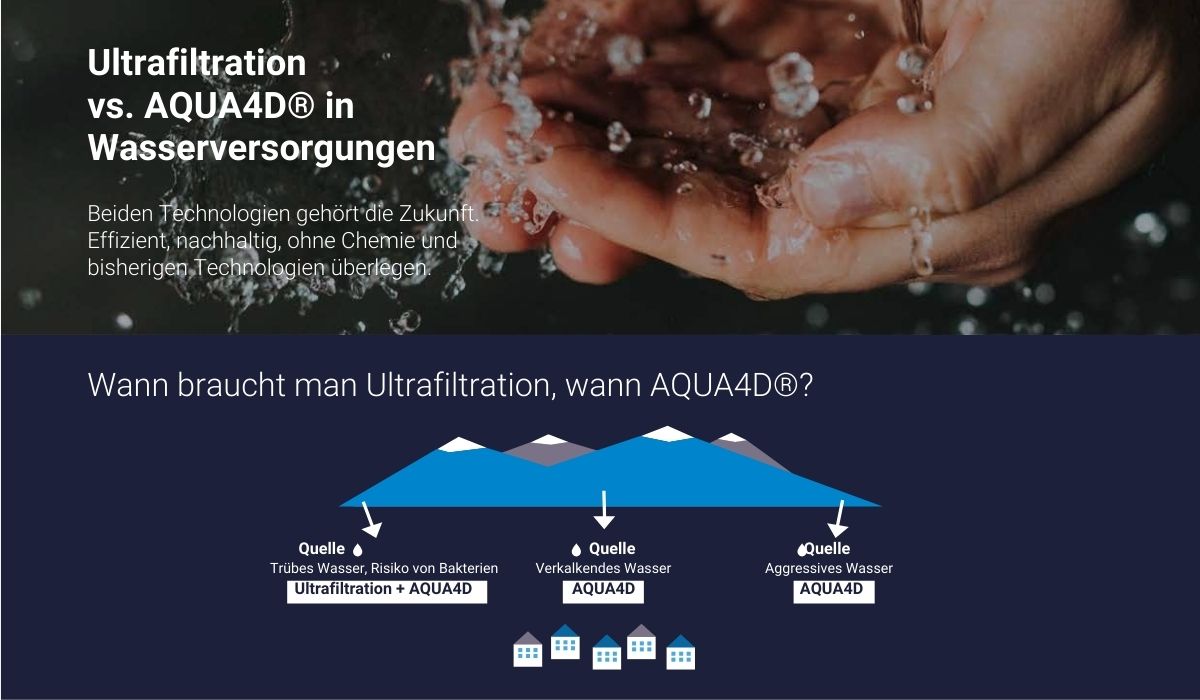
AQUA4D® briefly described
AQUA4D® is a technology that has existed for about 20 years and has several thousand systems in operation on all continents. The system transmits resonance fields into the water, thereby resulting in water that can dissolve more minerals, similar to naturally flowing water. The water penetrates the soil more easily and fills up the finer pores there. This retains more water in the root zone of plants, which in turn results in a denser root system with benefits for plant health and yield. Nutrients and fertilizers are better dissolved. For this reason, the technology is widely used in agricultural irrigation around the world.
The treatment increases redox, which changes the water from a corrosive to a passivating (protective) state. AQUA4D® also offers customized solutions for all types of buildings against corrosion, calcification or bacterial development. The Canton of Valais promotes such systems for public and subsidized buildings, and prescribes them in its energy guidelines.
What problems does AQUA4D® solve that Ultrafiltration does not?
The deposition of limescale in the pipes is prevented – with AQUA4D® treatment, deposits in the pipes are permanently prevented. Sometimes a reverse osmosis system is recommended against limescale problems. However, this solution is very expensive and environmentally harmful because of the large amount of discarded water, as well as the greatly increased energy costs.
Corrosion due to aggressive water is prevented and inhibits rust, which is also a nutrient for bacteria.
The build-up of iron and manganese bacteria deposits is prevented, because the habitats for bacterial development are eliminated or they do not develop in the first place. In addition, organic particles no longer stick to the pipes, but are repelled and flushed out.
For agricultural irrigation systems, there are also the following very important solutions:
– Reduction of water demand by 20 to 30 % (with at least the same plant quality)
– Regeneration of salinized and over-fertilized soils, by dissolving incrustations
– Increased health and resistance of the plants through denser root growth
What problems does Ultrafiltration solve that AQUA4D® cannot?
Substances are effectively and specifically filtered out of the water; AQUA4D® cannot filter or kill bacteria from the water.
Suspended matter can be removed from turbid water so that it becomes transparent again.
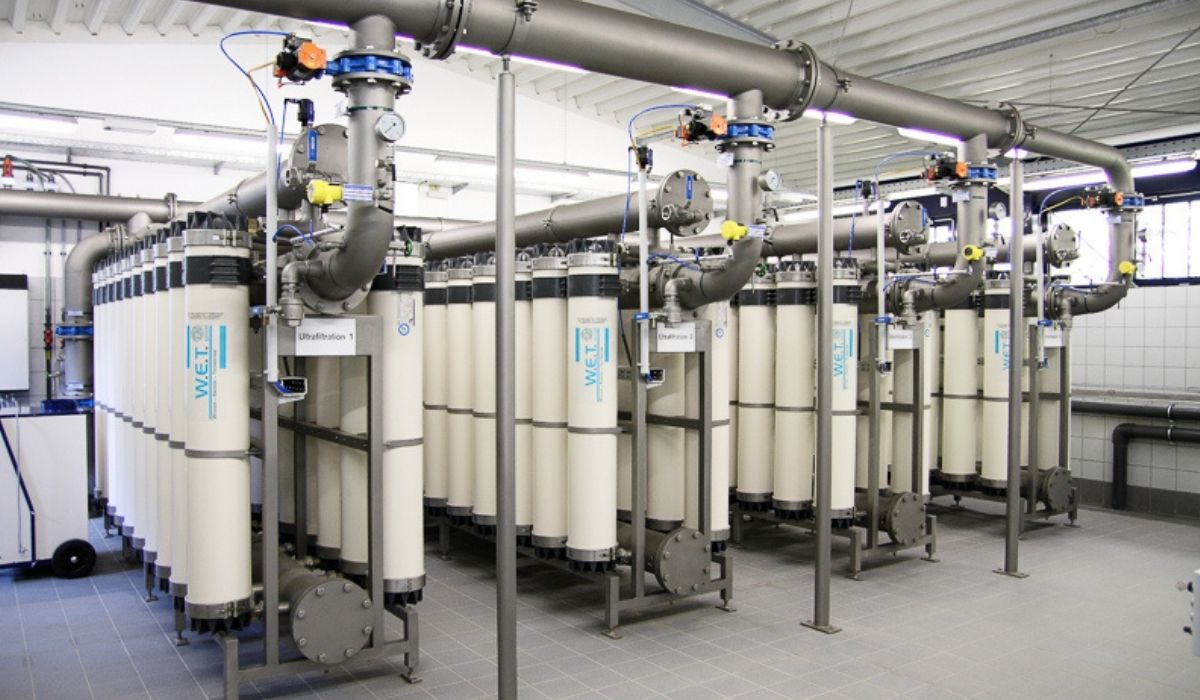
Similar to AQUA4D®, ultrafiltration is also modular in design, making production and maintenance much easier.
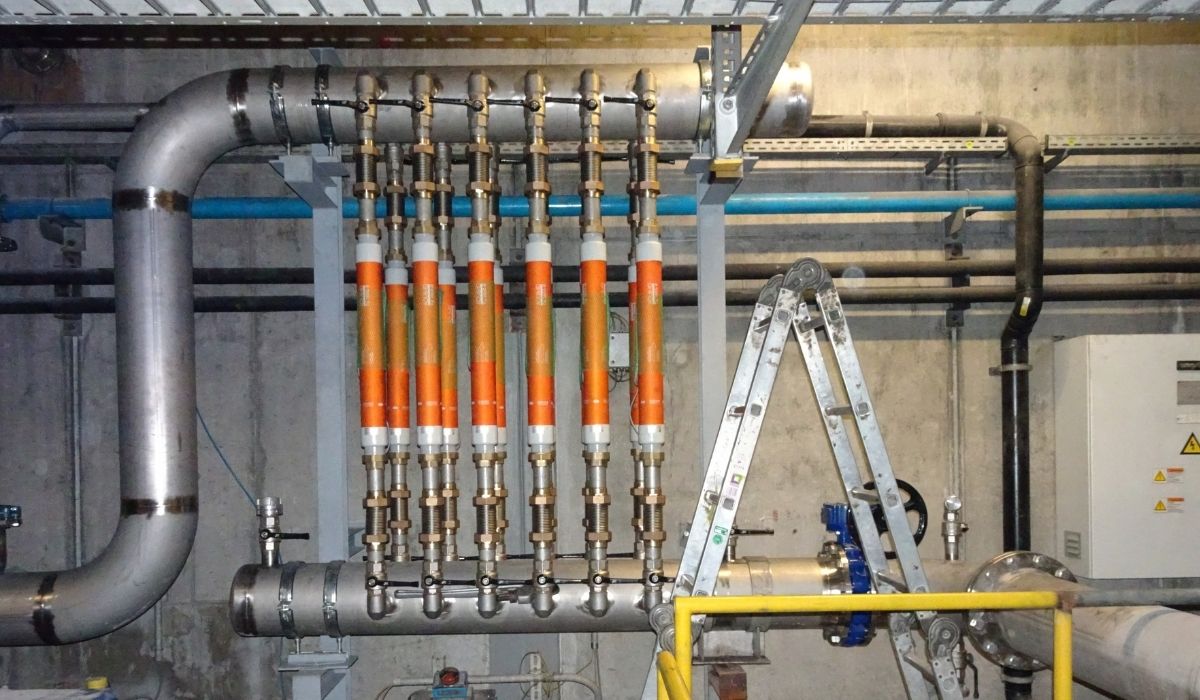
AQUA4D® is characterised by high efficiency, and low energy and maintenance costs.
Conclusion
One thing is clear: the future belongs to the combination of these two efficient and sustainable technologies. In this way, most problems can be solved without adding chemicals to the drinking water. This protects the water cycle for future generations, solves tricky problems in a sustainable way and makes it possible to do without adding chemicals such as chlorine, or to avoid replacing pipes.

Control pipe – after 8 years without treatment

Control pipe – after 6 years with AQUA4D
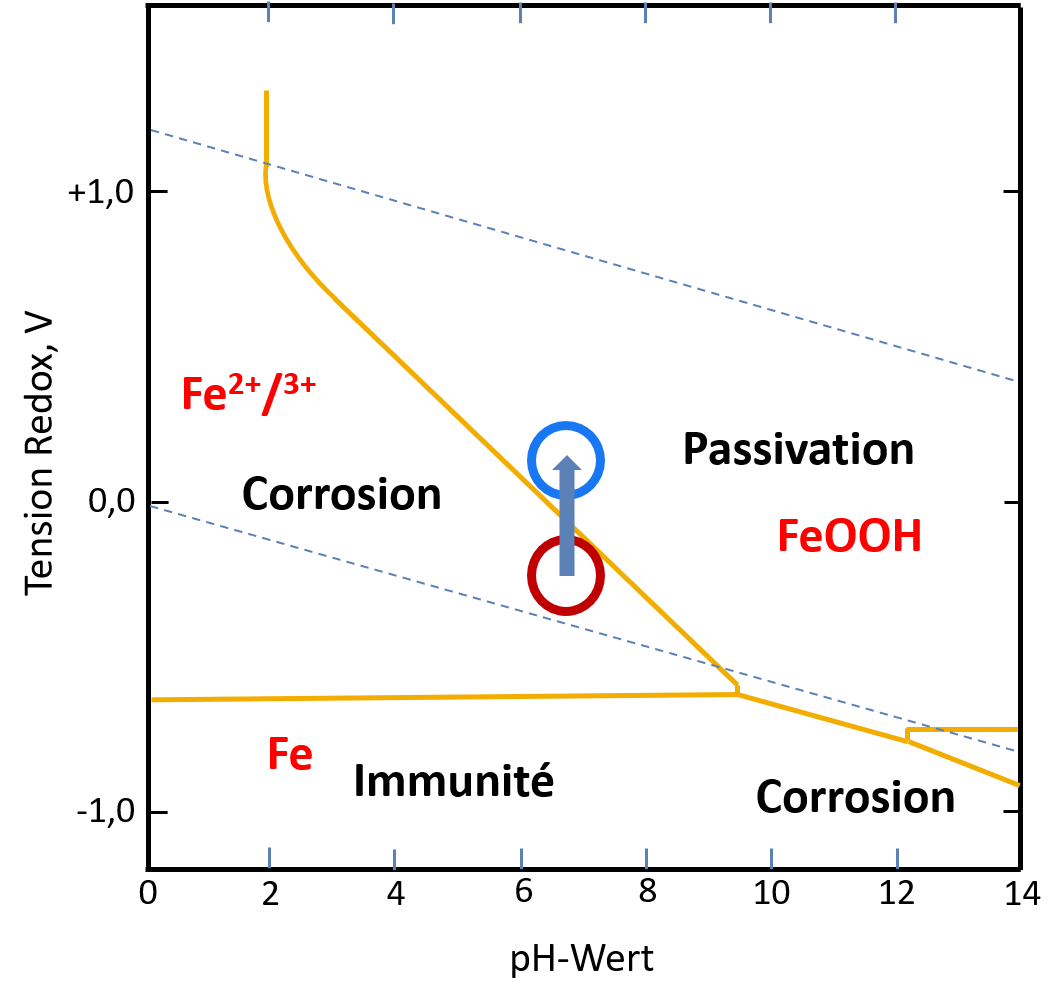
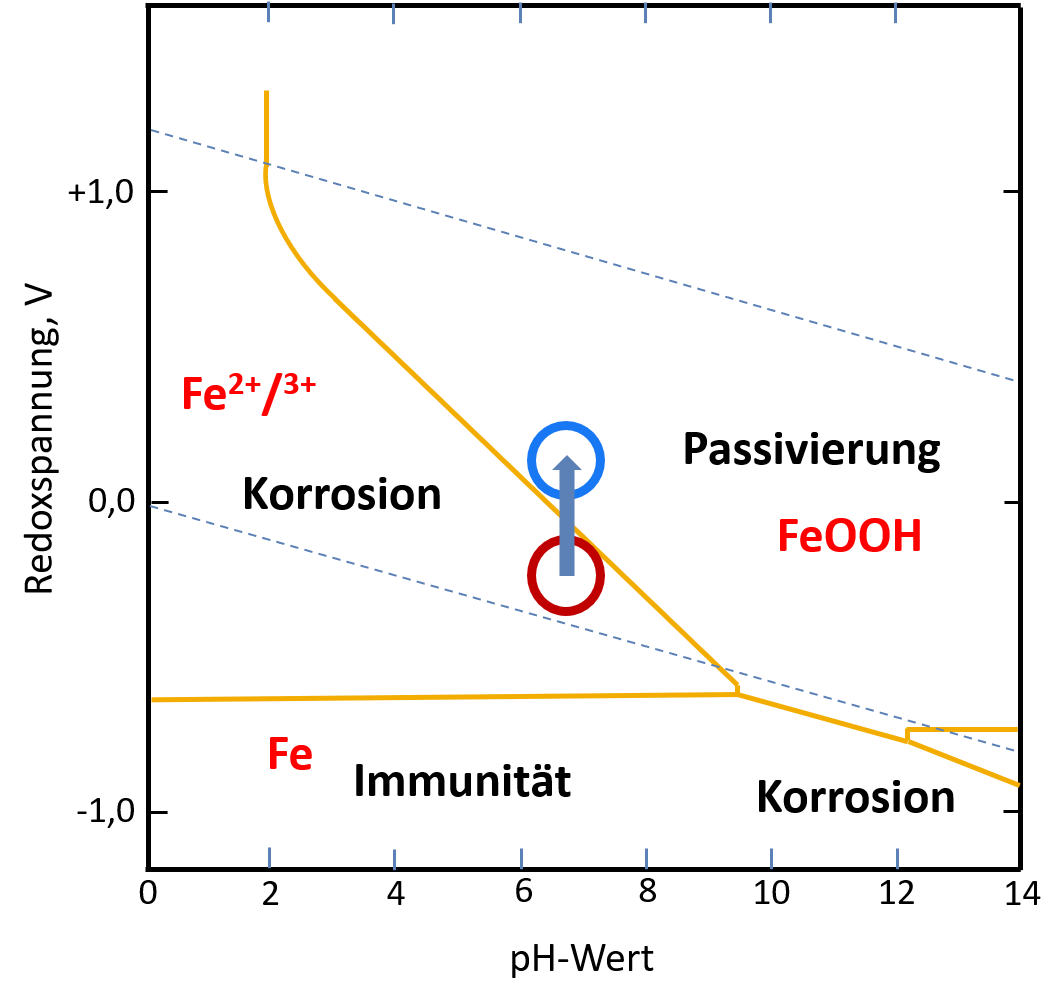
AQUA4D® changes the redox voltage. As a result, the water is no longer found in the corrosion area, but in the passivation area.
Sources
https://ehjournal.biomedcentral.com/articles/10.1186/1476-069X-7-23
https://pubmed.ncbi.nlm.nih.gov/32213849/
https://www.nap.edu/read/9595/chapter/13#221
https://www.aqua4d.com/news/de/towards-a-chemical-free-elimination-of-biofilm/
https://www.aqua4d.com/news/de/events/bacteria-prevention-also-possible-without-a-chemical/



